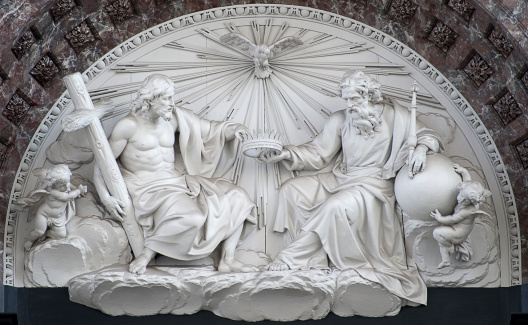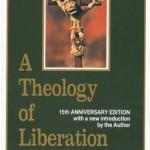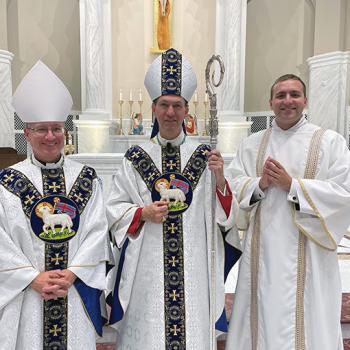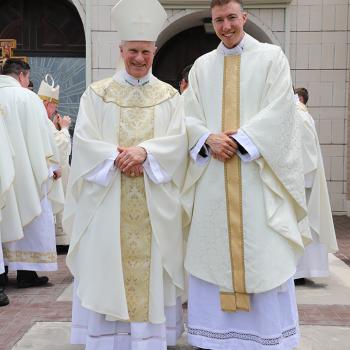Throughout the history of the Christian church there have been hotly contested debates over various doctrines. Though it may seem foreign to us today, the early church had to deal with people within its ranks who questioned the very deity of Christ. Who was he and how is he to be understood? The church dealt with many questions, but none so hotly contested as knowing Christ from a Trinitarian perspective. As Gerald Bray writes in the forward, “Not everyone came on board with every aspect of this development, and there are still some historical divisions that have been stubbornly resistant to all attempts to overcome them[1].” Jesus in a Trinitarian Perspective includes six chapters, authored by six contributors, and is edited by Fred Sanders and Klaus Issler. Each chapter has a list of study questions along with a list of key terms. They revisit some of these ancient issues and their implications on our understanding of Christ as part of the Trinity.
Jesus and Chalcedon
Fred Sanders starts the book with a great introduction to Christology. As an introduction to this writes, “The six chapters of this book explore the implications of Jesus’ deity as one of the Trinity, tracing the long arc from God’s eternal being to humanity’s redemption[2].” Dr. Sanders strives, and succeeds, in a making a complex issue easy to navigate and understand. He does this by looking at the historical aspects including those of the council of Chalcedon. This is vital since a proper Christology serves to help understand the Trinity in a fuller way[3].
After a great introduction by Fred Sanders, J. Scott Horrell follows with a chapter titled The Eternal Son of God in the Social Trinity. J. Scott Horrell makes it perfectly clear from the onset that, although grammar speaking of the Trinity was lacking in the early church, they were Trinitarian[4]. He discusses the introduction of such language and grammar at the councils of Nicea and Constantinople, and also explains how they left some language open to interpretation. In regards to this J. Scott Horrell writes, “The councils provide the box, so to speak, outside of which there is no Christian orthodoxy and inside of which there is room for somewhat varied understandings[5].” He spends a great deal of time documenting scriptural evidence for the Trinity. By doing so he documents for the reader that there are at least 106 passages of scripture that deal with the Trinitarian concept.
Different Schools of Thought
Donald Fairbairn next has a chapter titled The One Person Who is Jesus Christ. A look at the compromise between to schools of thought at Chalcedon are discussed. The schools that were at odds were those of Antioch and Alexandria. He challenges a well-documented assertion that those in Antioch were unified in their Christology. A study of patristic theology seems to indicate that this is not the case. In discussing this development Fairbairn writes, “Careful study of these writers’ exegesis over the past half century has shown that the differences among Antiochenes were greater than the differences between them and the Alexandrians[6].” What is interesting is that Dr. Fairbain seems to come into the research for his chapter with an open mind. In doing so he rejects the accepted paradigm that Alexandrians allegorized scripture, and that the Antiochenes took it literally. He bases this on patristic readings from Cyril of Alexandria and John Chrysostom and notes that their exegesis is similar. They were combating what was a minority view of those such as Nestorius.

The next chapter is written by Gary DeWeese and is titled One person, Two Natures. In this chapter he looks at the Trinity from a philosophical perspective. He describes how different philosophical and gives an honest critique of the words person and nature. In doing so it fits in perfectly with the language of early church councils, particularly Chalcedon. In describing this language Dr. DeWeese writes, “The attempts to understand what, precisely, the God-man Jesus was necessarily involved the use of philosophical terms and concepts. But as the background metaphysical systems changed, so did the meanings of those terms[7].”
The following chapter Christ’s Atonement and is written by Bruce Ware. The overall concept of the chapter is that of the atonement. The atonement must be the work of a Triune God, because without the Trinity there would be no atonement. Of course if there is no atonement for our sin then there is no salvation[8]. Dr. Ware argues that to understand Christ is to understand him in his proper role as the second person of the Trinity. Without his Trinitarian role, and that of the Father and the Spirit, then Christ would cease to be who he is. The logical conclusion then is if Christ is not who he is then we are still dead in sin.
The last chapter was written by Klaus Issler, who is also one of the editors. This chapter is titled Jesus’ Example and is a great treatise on the example of Christ for the church and every Christian. Dr. Ware argues that Jesus was successful based on his dependence from the Father and the Spirit. Dr. Issler writes, “The degree to which Jesus depended on the Father and the Spirit, instead of his own divine power, is the degree with which Jesus can be our genuine example[9].” In elaborating on his thesis, Dr. Issler, quotes from the popular work of Thomas Kempis called Imitation of Christ, as well as a scriptural basis for imitating the savior. Dr. Issler is wise is including a list of objections later in the chapter and masterfully overcomes possible objections.
Though there are many facets to the book the two which are most interesting in the Christological discussion, particularly in Chapter 1, and that of the atonement. The Christological question is vital to Christianity and has further implications in the atonement. To understand the Christological perspective one must look not only to scripture, but have an understanding of the patristic era and the language used. This process is arduous, and will entail understanding philosophical and metaphysical terms. This helps us to understand how the early church developed their theology, and how we defend our own.
Jesus and Atonement
The section on the atonement was most interesting in that there was some argumentation never heard before. The idea that the atonement must be the work Christ involved in the Trinity had never been thought of before this book was read. If the person of Jesus is removed from the Father and the Spirit then Christ would cease to be who he claimed he was. If Christ was not who he claimed he was then the atonement really did not happen. If the atonement did not happen then there is no salvation.
Though there are many strengths one is hard pressed to find weaknesses in the work. One weakness is that there is a lot of theological language used. This is understandable, especially since church councils are being discussed, and philosophical terms are being elaborated on. Though key terms are listed, one who does not have a theological base would be hard pressed to follow along and would need to stop to discover what certain terms mean. The writers do their best to overcome this, but the everyday layman may be overcome by it.
In conclusion this work is one that is beneficial for gaining a better understanding of Christology. The authors are not afraid to put aside presuppositions and let the facts speak for themselves. That is rare in today’s theological environment and is refreshing. The authors provide much detail on topics such as Christology, atonement, and imitating Christ. One would be hard-pressed in absorbing all knowledge in one read, and thus is essential to every theologian and Bible student library.
WORKS CITED
Sanders, Fred, and Klaus Issler, eds. Jesus in Trinitarian Perspective. Nashville, TN: B&H Publishing, 2007.
[1] Fred Sanders and Klaus Issler, eds., Jesus in Trinitarian Perspective (Nashville, TN: B&h Publishing, 2007), xi.
[2] Ibid, 3.
[3] Fred Sanders and Klaus Issler, eds., Jesus in Trinitarian Perspective (Nashville, TN: B&h Publishing, 2007), 3.
[4] Ibid, 45.
[5] Ibid, 47.
[6] Fred Sanders and Klaus Issler, eds., Jesus in Trinitarian Perspective (Nashville, TN: B&h Publishing, 2007), 88.
[7] Ibid, 119.
[8] Fred Sanders and Klaus Issler, eds., Jesus in Trinitarian Perspective (Nashville, TN: B&h Publishing, 2007), 156.
[9] Ibid, 191.













